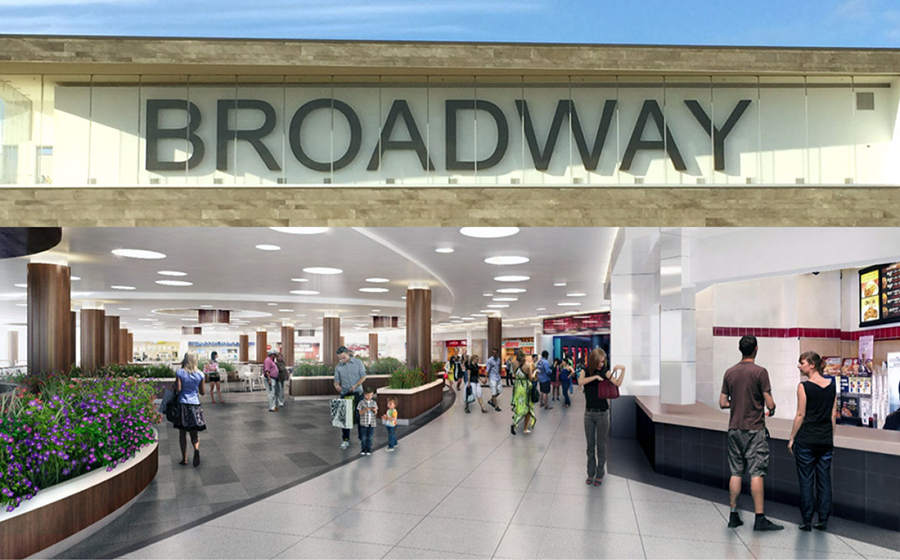In the current highly challenging shopping center environment, it sometimes seems that any property below \”A-Grade\” is regarded as destined for failure. The current mantra, voiced repeatedly by financial media, is that A-malls will be the long-term survivors of the retail apocalypse, while B- and C-level malls will be washed away by the competing forces of online shopping and millennial indifference.
I beg to differ.
First, let\’s understand that the generally held assumptions about mall quality levels are most commonly linked to their respective retail sales brackets: i.e., A-malls typically produce $500-$750 per sq. ft.; B-malls $300-$500, and C-malls below $300.
More subjectively, A-malls are typically described as luxury, high-end environments; B-malls as more mundane, middle-of-the-road properties, and C-malls as an endangered species headed for obsolescence.
But the real question is…can a \”B\” mall succeed within the limitations of its moderate sales-per-square-foot quotient and less-than-stellar ambience?
The answer is yes and no.
It all comes down to the expertise and savvy of the operator. In fact, B-malls often have some distinct advantages over their higher priced \”A\” brethren:
- Broader Prospective Tenant Base
At their lower cost of entry, B-malls are frequently more attractive to both leading mid-priced retail brands and a mix of intriguing local entrepreneurs and restauranteurs who value affordable rents as a fair trade-off for the less-than-stellar architecture and ambience. - Lower Redevelopment Costs
B-malls are often easier and less costly to modify and update since the more simplified architecture and interior build-out can be inexpensively converted to meet the requirements of new tenants and uses. - Serving a Community Need
Very often what\’s most effective is not an over-the-top architectural feat but rather a pleasant, accessible and easy-to-navigate experience. In other words, successful B-malls often project a \”Main Street\” presence, fulfilling basic everyday consumer shopping needs as well as reasonably priced dining and entertainment options.
I happen to live within easy driving distance of a perfect B-mall example: Broadway Commons is a 975,000-square-foot center located in the heart of Nassau County, Long Island, one of the New York area\’s densest suburban locales. There\’s an IKEA (one of only three in the NYC region), a full-line Target and a very accessible small-format Macy\’s. There\’s a luxury-seated multiplex cinema, a range of decent and affordable eateries and everyday neighborhood services including a dentist, optician, insurance broker and an expansive gaming parlor for the kids.
There\’s also a highly-visible drive-through Starbucks on an out-parcel facing the highway, along with a relatively new Chick-fil-A with a perpetual line of cars queuing up at the take-out window.
Broadway Commons is owned by Pacific Retail Capital Partners, an L.A.-based developer specializing in high-quality mid-market shopping centers. \”B malls are not dead or dying,\” says Steve Plenge, managing principal of Pacific Retail. \”However, these properties need to cater to the interests of the trade area, providing goods and services most needed by the community.\”
Nevertheless, there is a caveat…and a very significant one. \”B\” malls have an additional onus to produce a clean, well-lighted and comfortable environment…in other words, an ambience more typical of \”A\” malls. And B-mall owners must be active managers … consistently updating and streamlining the customer experience. Given the neighborhood character of these centers, ease of shopping and simple, visible in-and-out traffic pathways are key.
Too many B-level centers have been allowed to slip down the slope of underfunded amenities, deteriorating physical plant and therefore a diminished level of tenant quality. In a very real sense, these properties have given the entire B-mall category a bad name.
In the end, it\’s not really the sales-per-square-foot rating which determines the success or failure of a shopping center. Rather, it\’s the willingness of management to fund a higher-than-expected level of comfort and quality that makes the difference.



